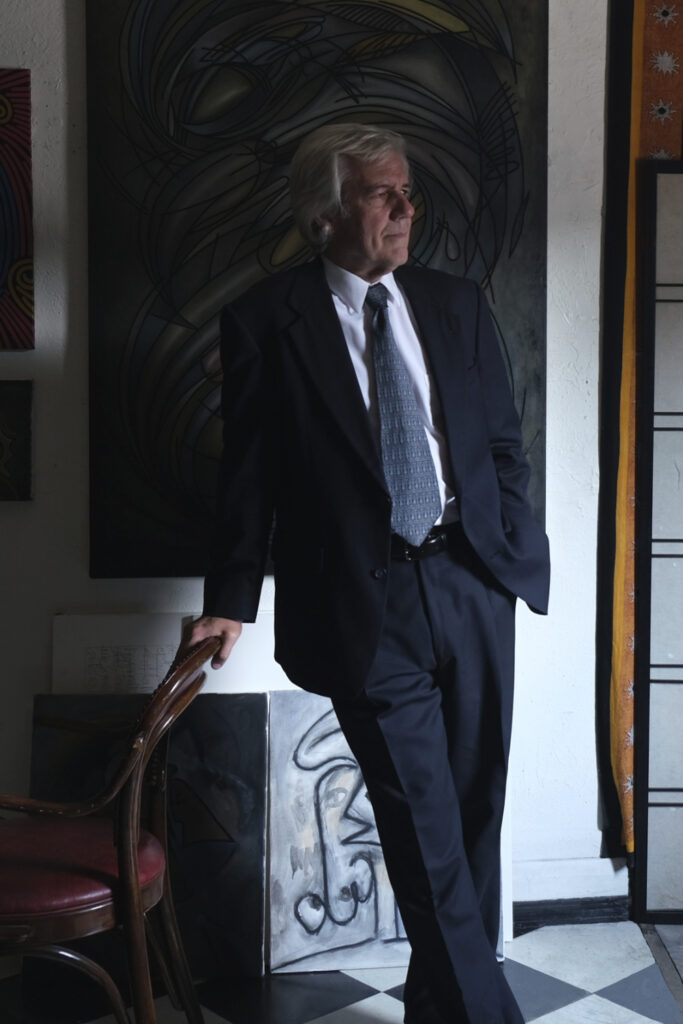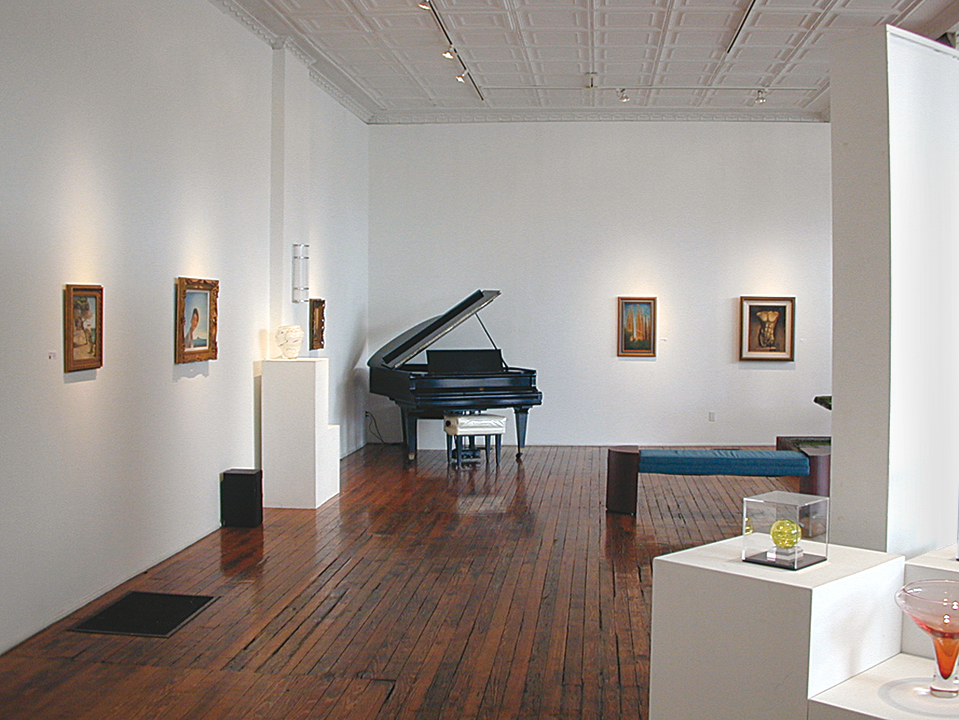 European Sojourn
European Sojourn
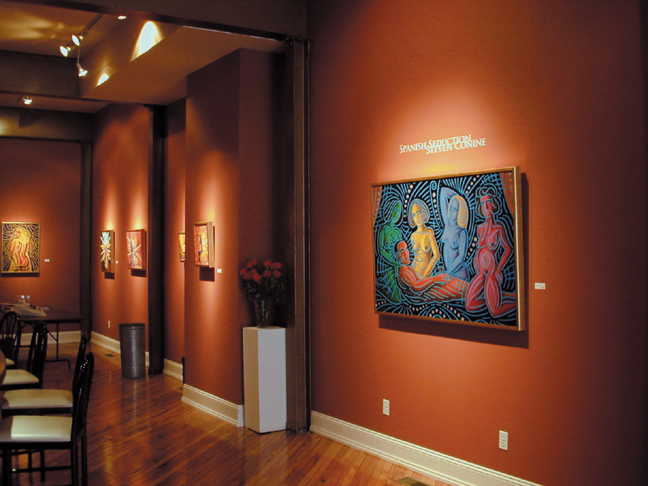 Spanish Seduction
Spanish Seduction
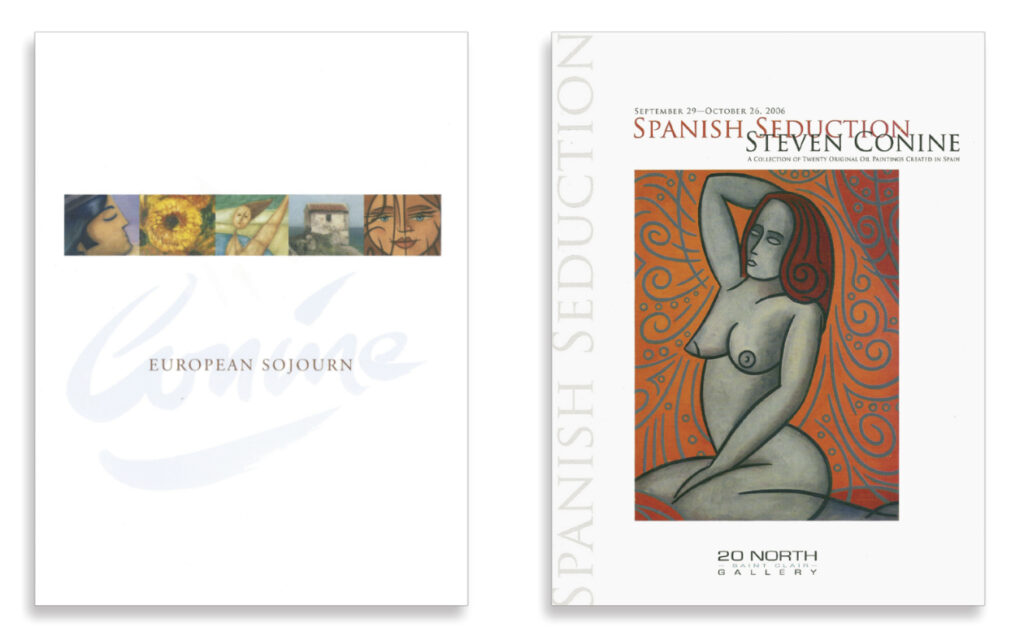 European Sojourn and Spanish Seduction Catalogs
European Sojourn and Spanish Seduction Catalogs
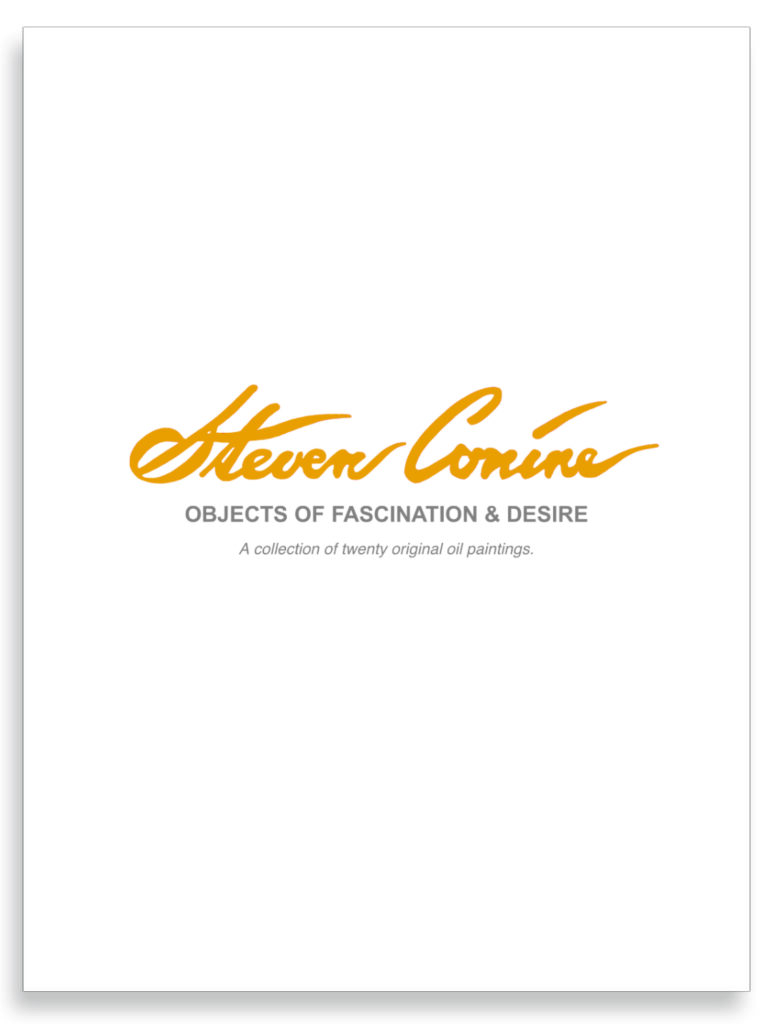
Objects of Fascination & Desire catalog
Born to the artist’s way, Steven Conine has built his life the way he builds his powerful, color-drenched paintings – one meticulous brushstroke at a time. Whether through dramatic portraits, scenes from life here and abroad, or soul-baring inner visions, he feels compelled to communicate with others.
Conine’s calling became clear just a few years after his 1960 arrival, the first of five children in a family with a deep American foothold but even deeper European roots. He was the next generation in an art-loving clan: his grandfather collected fine art and his great-aunt, Pearl Hunter, was a noted local painter. As a child keen to express his world through color and line, young Steven often took the road less traveled.
Sometimes that independence was not appreciated – especially by teachers more concerned that students follow directions than express themselves – but often his early works drew praise and wound up on public display. In high school he studied drafting as well and began to build his own brand of connoisseurship, culminating in an exhibition Conine organized before graduating.
Conine studied commercial design and fine art at the Columbus College of Art and Design (1983). He then pursued individual study with Toledo/Adrian artist Virtus Gale. Work as studio art director for a local advertising agency occupied his days for years, but he never quit painting in his studio. Commissions began to come in and he was a sought-after private teacher.
One commission presented the opportunity to push into new creative and spiritual realms. In 1989 Conine was hired to design and paint a complex mural on the vaulted ceiling of Sacred Heart Church. For one year, he mounted a high scaffold to brush on Biblical scenes focusing on the Twelve Apostles.
Seeking new inspiration, Conine began to travel. Trips to Europe allowed for first-hand study of time-honored masterpieces by Rembrandt, Picasso, Titian and other masters, as well as the chance to soak up historic landscapes where they had been created. Travels in France and Spain pushed the borders of his inner world, too, and inspired paintings remarkable for their powerful personal messages as well as exacting craftsmanship.
Conine’s first gallery exhibition, European Sojourn, opened in 2003. Twenty paintings derived from those experiences made history at 20 North Gallery, one of Toledo’s finest art showcases. All paintings were purchased before the exhibit opened, the first such sell-out in its history. At the time, art director Peggy Grant said, “I think it’s a very exciting show. There’s something here for every taste. His style has a nice way of evolving.”
Energized by such a resounding success, Conine packed up his studio and relocated to Madrid. There he could wander the streets and byways, pore over paintings by, among others, Diego Velasquez and Francisco Goya in the Prado, and sample all the sensory richness of the country and its people. He spent over two years in residence.
Spanish Seduction, another successful exhibition at 20 North Gallery followed in 2007. By now, Conine had drawn important collectors from the region, including curators, arts patrons and scholars. His works also wound up in public places such as local high-end restaurants.
More travel and lengthy stays in Ann Arbor and New York City kept Conine fresh. Inspired by new scenery, he also devoted time to delving more deeply into his soul. His ability to visually depict tension energizes his paintings and drawings. Here the artist explores contrasting ideals – spirituality and sexuality, good vs. evil, metaphysical and religious realms, iconic vs. ironic.
“I paint to capture what is not there,” Conine says by way of highlighting the mystery he conjures. Still, “I do believe there is some common thread throughout my works that connects them together,” says the artist. “Realism is my foundation, spontaneity is my freedom.”
His latest beguiling body of work, Objects of Fascination & Desire, vibrates with color, sculptural strength and visible energy. Once seen, his paintings always leave a lasting impression on the viewer.
— Sally Vallongo
Conine lives in New York City. For sales contact Steve at: info@stevenconine.com (929) 753-1086

